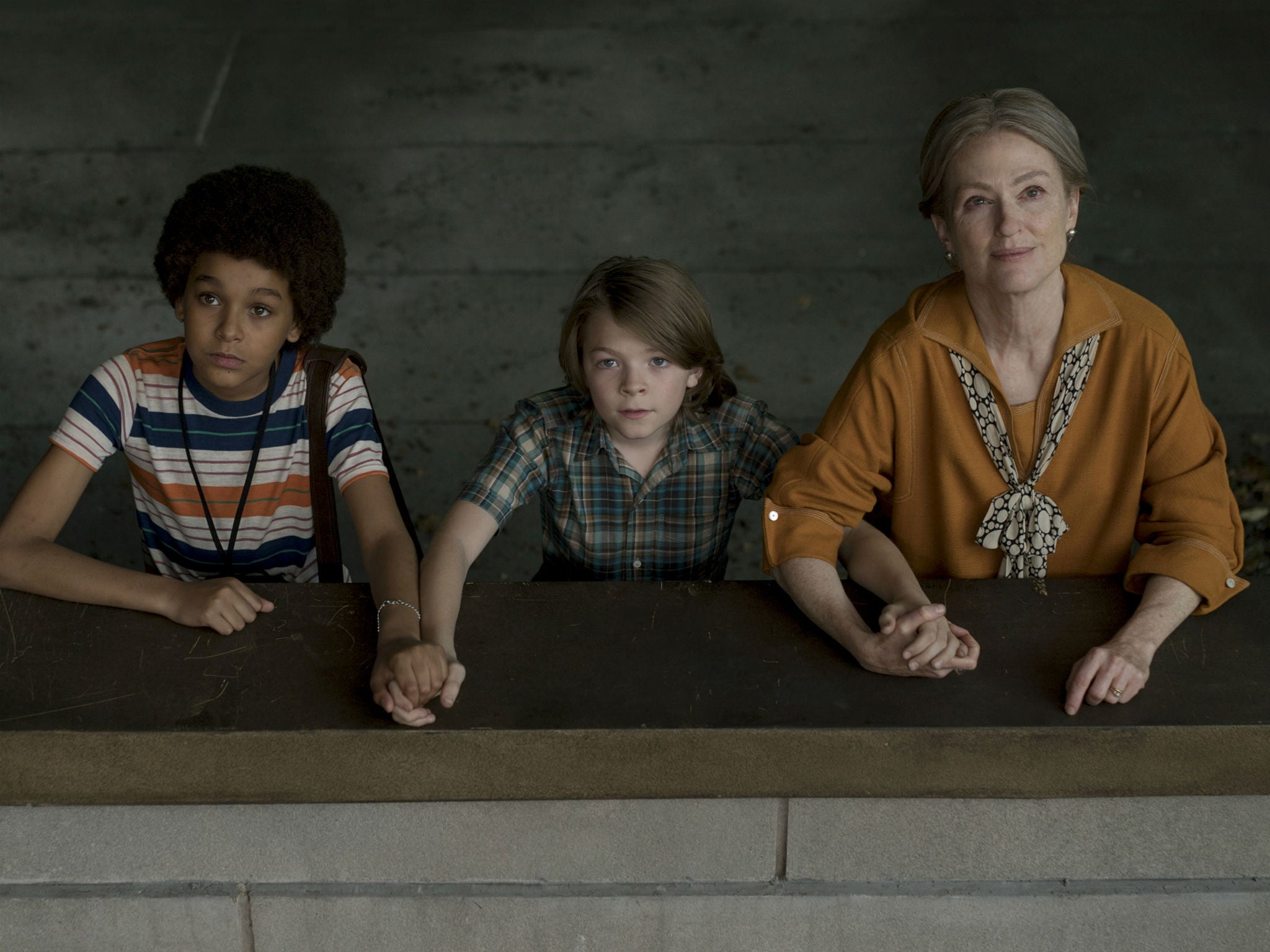Todd Haynes on why his new film will get kids to put down their mobile phones
The American auteur was inspired by the likes of Wes Anderson and Spike Jonze to make a children’s movie – and recalls his own childhood cinematic loves, from ‘Mary Poppins’ to ‘Romeo and Juliet’

Your support helps us to tell the story
From reproductive rights to climate change to Big Tech, The Independent is on the ground when the story is developing. Whether it's investigating the financials of Elon Musk's pro-Trump PAC or producing our latest documentary, 'The A Word', which shines a light on the American women fighting for reproductive rights, we know how important it is to parse out the facts from the messaging.
At such a critical moment in US history, we need reporters on the ground. Your donation allows us to keep sending journalists to speak to both sides of the story.
The Independent is trusted by Americans across the entire political spectrum. And unlike many other quality news outlets, we choose not to lock Americans out of our reporting and analysis with paywalls. We believe quality journalism should be available to everyone, paid for by those who can afford it.
Your support makes all the difference.Many great directors have one classic kids’ movie in them. Think Spike Jonze’s Where the Wild Things Are or Wes Anderson’s Fantastic Mr. Fox. Now it’s the turn of Todd Haynes, the American auteur behind Carol, Velvet Goldmine and the Bob Dylan bio I’m Not There. His new film, Wonderstruck, is based on the 2011 illustrated children’s book by Brian Selznick, who also wrote The Invention of Hugo Cabret, which was adapted by Martin Scorsese as Hugo, another masterful movie for kids.
Haynes’s desire to explore his inner child came in part, he says, from watching the likes of Jonze and Anderson bring their sensibilities to children’s literature. “I thought it would be a really cool thing to do, and something I hadn’t done before,” he says, perched on a sofa in London’s Soho Hotel. He ponders whether Anderson et al making films for children was really about them wanting to make a movie for their younger selves, just as it is for him.
Raised in the San Fernando Valley, California – his father Allen was a cosmetics importer; his mother Sherry studied acting – Haynes vividly remembers being “exposed to movies that were a little beyond my reach” when he was young. He was three when he saw Mary Poppins, a film that fired his imagination. “I would draw and act out scenes,” he remembers, “and dress my mum up as Mary Poppins.”
The real turning point was 1968. He bookended the year by seeing the film musical Oliver! and Franco Zeffirelli’s Romeo and Juliet, which blew his tiny mind. “Maybe it was all seen through the naïveté of a seven-year-old but I was like, ‘Wow! This is the heaviest thing I’ve seen’. It’s so profound, erotic and romantic. I was never the same after that.”
No wonder Haynes was hit by Wonderstruck. He wanted to provide the same kind of seminal experience for kids that he got back in 1968. Of course, that was then and this is now. Even the folks at Amazon Studios, who released the film in the US, questioned whether this tale – spanning 1927 to 1977 – is really for kids. “I’m like, ‘You guys, did you read the script? It’s a kids’ film!’ I just never wanted to think kids were too impatient for it.”

The story follows two runaway children, 50 years apart, who become spiritually connected across time. Shot in evocative black and white, Rose (Millicent Simmonds) is a 12-year-old deaf girl living in pre-Depression New Jersey who seeks out a silent film star, Lillian Mayhew (Julianne Moore). Told in parallel is the 1977 thread, where Ben (Oakes Fegley), also 12, abandons his Minnesota home and heads to New York to find his father.
Haynes frequently tested the film on kids, including a particularly memorable screening with two 13-year-old boys. “One kid’s phone was sitting on the arm of his chair and it started to vibrate. He wasn’t looking at it, and finally he just takes his jacket and throws it over his phone to watch the movie to the end. Oh my God, that’s all I want! It won’t happen everywhere but it was happening there.”
The film got mixed reviews when it played in Cannes last year, although you suspect a bunch of ageing critics were arguably less entranced by the film’s magical elements than those two teenagers. In Haynes’s eyes, he’s made an analogue movie in a digital age; a film that might just distract kids from their tablets and iPhones to remind them of simpler pleasures.
“I wanted to make this movie about kids who create things, build things with their hands, have marker pen and glue all over their fingers,” he says (the young protagonists all do that, as if they’re in an episode of Take Hart). “I hope kids never stop doing that. You’ve got to play with glue and paste and make things and get dirty. Phones are clean except for the grease on the surface of the screen.”

Watch Apple TV+ free for 7 days
New subscribers only. £8.99/mo. after free trial. Plan auto-renews until cancelled

Watch Apple TV+ free for 7 days
New subscribers only. £8.99/mo. after free trial. Plan auto-renews until cancelled

Beyond this, the film is right up there with Haynes’s most beautiful work, thanks to his regular collaborators – cinematographer Ed Lachman, costume designer Sandy Powell and production designer Mark Freidberg. Their work, along with Carter Burwell’s score, coalesces quite beautifully in the scene where Ben first arrives off the bus in New York and into a world of 1970s colour.
Virtually every extra in the scene looks like he or she has been teleported in from the era. It took a lot of work, says Haynes. “You’re also casting bodies that don’t exist any more. A kind of body, a skinny frame, that almost feels like it’s from another species, let alone decade. Even the way people didn’t wear underwear… that’s asking something very specific of background actors!”
Did they even go as far as growing underarm hair to really take on that free and easy Seventies vibe? “Yeah, for sure!” Haynes laughs. “Everything. The clothes just fit differently, if you’re not wearing undergarments with polyester clothes and it’s the hot summer of 1977. So it asks an entire method approach for the extras, which is not always the case. And they dug it – you can see it in their performances.”
Another remarkable aspect of the film is the performance of Utah-born Simmonds, who is deaf in real life (and makes an equally startling appearance in John Krasinski’s suspense thriller A Quiet Place, also released this week). “That was really just one of the rare bonuses of this experience for me,” says Haynes. “I so wanted to have a deaf kid involved, and we included other deaf actors in the black-and-white story.”
With Wonderstruck, his seventh full-length movie, Haynes calls it “a new phase of my career”, opening up to projects he hasn’t developed himself. That thirst for experimentation is set to continue into his next film, a documentary about seminal band The Velvet Underground, in which he’ll team up with Polygram Entertainment and Verve Label Group.
“I’ve never done a doc before. They came to me with this and I thought, yeah! It should be cool.” Too right.
Wonderstruck is now available to own on Digital Download, DVD, and Blu-ray.
Join our commenting forum
Join thought-provoking conversations, follow other Independent readers and see their replies
Comments